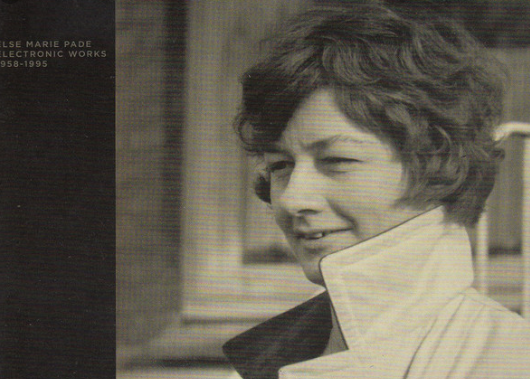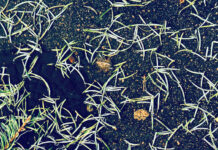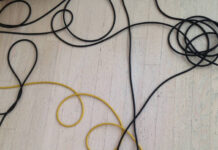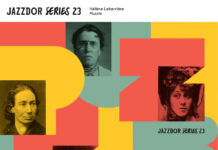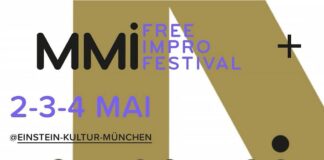Even before she began composing musique concrète and electronic music in the early 1950s, Else Marie Pade lived what can only be called an eventful life.
Born in Ain Aarhus, Denmark in 1924, Pade as a child suffered from a viral kidney infection and consequently spent much of her time convalescing in bed. While doing so she developed a sensitivity to the sounds surrounding her and to the imaginative worlds they provoked within her. She pursued music by studying piano and playing in jazz bands in her teens; during World War II her life took a more somber turn after she joined the Danish resistance and was caught and imprisoned. After the war she studied piano at the Danish Royal Academy of Music and afterward studied composition—including serial composition—privately. A 1952 encounter with a broadcast on Danish radio of a work of musique concrète by Pierre Schaeffer led her to contact Schaeffer and culminated with her composing 1954’s En dag pa Dyrehausbakken, the first work of musique concrète by a Danish composer.
Beginning in the 1950s, Pade worked for Danish radio as a producer and creator of soundtracks for radio programs. Together with chief engineer Holger Lauridsen, who shared her interest in electronic music, she put together a recording studio there where she composed much of her music. Her most productive period was the ten year span between the mid-1950s and mid-1960s, a time during which she not only invited leading electronic composers such as Herbert Eimert and Karlheinz Stockhausen to Denmark to speak to a study group she and Lauridsen formed, but also attended several summer sessions at Darmstadt where she studied with Stockhausen, Pierre Boulez and György Ligeti. Until the early 2000s Pade’s work was held in the Danish Radio archives and remained unreleased; a new 2 CD/3 LP set from Important Records collects several significant examples of her compositions.
Pade was attracted to concrete and electronic music because she saw in it the potential to create and manipulate timbres that would allow her to translate the sounds she heard in her imagination into compositions. She was looking for new sounds, not necessarily new ways of producing old or already existing sounds, although she could do that too. Primarily, though, her interest seems to have been in using timbre as a tool for expression or for conveying events in a narrative rather than as something to be investigated, invented or invoked in and of itself.
Syv Cirkler (1958), Pade’s first purely electronic work, is paradigmatic of her often programmatic concept of electronic music. The piece was inspired by her trip to a planetarium at the 1958 World’s Fair in Brussels, and was meant to depict the motions of celestial bodies. The piece uses novel timbres but is clearly pitch-based, bearing a family resemblance to the European dialect of serialism that influenced it. Glasperlespil I and II of 1960 also contain traces of the pointillistic serialist aesthetic, but their episodic, contrapuntal organization is as much a function of pulse and pure sound color as it is of pitch.
Pade’s Faust suite of 1962 shows how she used electronic sound to frame an emotionally-fraught story. Pade was drawn to the Faust legend because of its expressive potential, which she realized with often ominous, foreboding sounds based on drones and otherworldly effects. The fourth section of the suite includes a haunting spoken recitation that she looped and echoed and otherwise manipulated electronically; the fifth section begins with the electronic mimesis of an electrical storm. (The Etude of 1962, which also opens with the sounds of an electrical storm, may have been a preliminary study here, although it subsequently develops along different lines). The much later Illustrationer suite of 1995 shows her continuing interest in the use of classic electronic sounds—often inharmonically metallic and resonant—to create an impressionistic, pictorial world parallel to but somehow based on our own.
Although Pade’s work, particularly that of the late 1950s and early 1960s, contains echoes of the vocabulary of the early postwar German avant-garde, it nevertheless reflects a fundamentally expressive sensibility that is uniquely hers. In this regard it differs from some of the other experimental and electronic musics being developed at the time. Having it available again not only enriches our picture of this time of great ferment, but also is a welcome addition to the electronic corpus in its own right.

